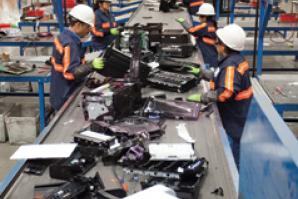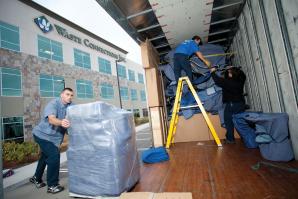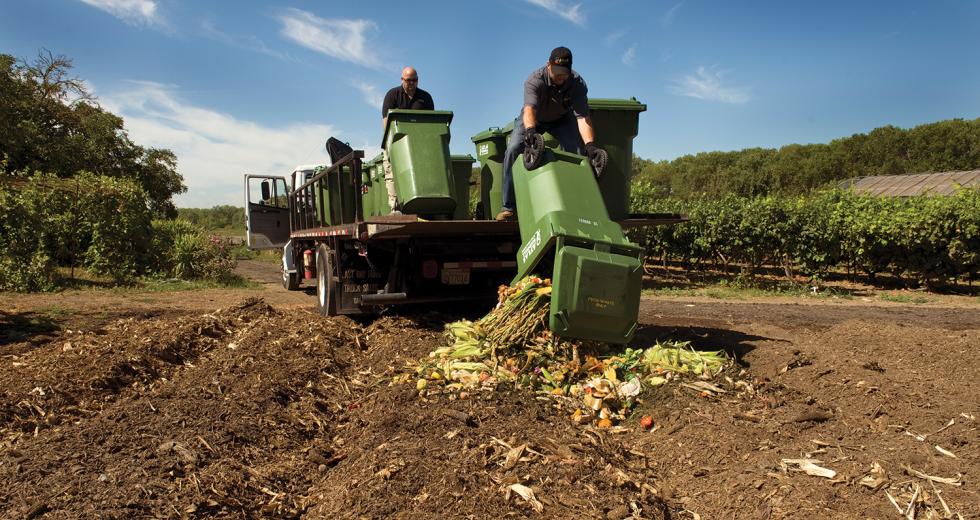Nowadays it’s not only hip for a business to go green, it’s the law. The state of California as well as some Capital Region jurisdictions have ordinances mandating recycling.
It also has the attractive bonus of financial benefit. Some companies have saved hundreds of dollars, even thousands, annually by stepping up recycling efforts.
Savings come two ways. Jurisdictions charge a franchise fee for material that goes to a landfill, measured by the size of the trash bins. So by reducing the bin size, that fee is reduced. Plus, commercial waste haulers often charge less for collecting recyclables than for trash.
Every year, the state’s businesses spend more than $2.8 billion on trash disposal, according to Californians Against Waste, an environmental research and advocacy nonprofit. Its figures claim a business could potentially save up to 90 percent on trash bills through waste reduction, recycling and composting. Sacramento’s commercial trash haulers estimate typical savings from 8 to 15 percent.
The dollar amounts vary widely depending on the volume and frequency of service and the provider. Case studies on the California Department of Resources Recycling and Recovery website show businesses saving anywhere from $1,000 to $500,000 a year. On the local level, Sacramento Regional Solid Waste Authority has several examples of businesses that recently saved $87 to $200 a month. Venetian Bridges Apartments in Stockton implemented a recycling program that saved the property $4,166 a month, according to its property manager.
Companies should look at the bill from their current service provider and also shop around for other bids, says Marie Woodin, program manager for the Environmental Management Department’s compliance division. There are currently 16 franchised haulers and 12 authorized recyclers in the Sacramento Regional Solid Waste Authority’s territory, she says. It is a very competitive business.
Laws have had a tremendous impact on the waste-reduction efforts of companies. In 1989 the state passed the California Integrated Waste Management Act, or Assembly Bill 939, requiring jurisdictions to divert at least 50 percent of garbage from California landfills by 2000.
Sacramento’s commercial trash haulers say businesses can save an average of 8 to 12 percent on their trash bills by recycling.
Between 2007 and 2009, most Sacramento region counties and cities passed ordinances with specific requirements aimed at maintaining or surpassing the state’s goal. Sacramento Regional Solid Waste Authority, for one, adopted the Business Recycling Ordinance in 2007, applying to all businesses and nonresidential properties who subscribe to 4 cubic yards a week or more of garbage collection service.
Examples of requirements include keeping recyclable materials separated from garbage, either subscribing to a recycling hauler or self-hauling to a recycling center, placing recycling containers in employee maintenance or work areas and posting signs explaining what and how to recycle. Materials that must be recycled include cardboard, mixed paper, metal, wood and beverage containers. Food and beverage services have more specific requirements.
The ordinance was amended in June 2009 to include multifamily dwellings, such as apartments, condominiums, mobile home parks or convalescent homes with five or more units that subscribe to at least 10 cubic yards of garbage collections service weekly.
Some commercial recycling ordinances throughout the state are quite lenient compared to those in the Sacramento region. Consequently, statewide, only one in five businesses has a program, according to the Sacramento Regional Solid Waste Authority.
But, as part of Assembly Bill 32, the Global Warming Solutions Act of 2006, a state law will take effect in January mandating recycling programs for businesses.
“The solid waste sector is a significant source of emissions, and one of the strategies was increasing waste diversion from the commercial sector,” says Mark Oldfield, spokesman for CalRecycle.
This could be good news for landfills statewide because similar ordinances appear to be working. Since the Solid Waste Authority’s ordinance was adopted in 2007, recycling has increased 58 percent, Woodin says. Local recycling companies also have noticed a sharp increase.
Laws or no laws, some companies have taken it upon themselves to divert more from landfills. Tuff Shed Inc. in North Highlands went from 100 yards of trash per week and no recycling, to 8 yards of trash per week.
Local restaurants are showing enthusiasm for Atlas Disposal Industries’ food waste collection program, which started about 18 months ago, says company spokesman Steve Bruce. It gives eateries small containers to collect produce scraps, which are transported to a vegetable farmer for composting. Atlas also composts the paper or soy-based plates, cups and utensils now used by many fast-food restaurants.
Venetian Bridges Apartments in Stockton, a 354-unit complex with 27 dumpster locations, started its recycling program virtually from scratch.
“There really wasn’t a recycling program at all. We just had a few bins randomly around the property,” says Matt Errecart, vice president of The Garibaldi Co., the apartments’ property manager. Unlike Sacramento, the city of Stockton had no ordinance requiring multifamily property recycling.
He ran into Jennifer Holcomb of Waste Management Inc. at the complex, and she asked if he’d like some ideas on recycling. “It took off from there,” he says.
He added more recycle bins and removed or cut the size of some trash bins and how frequently Waste Management came to empty them.
“I was a little nervous to be honest because any time you cut back on pickups, you have overflowing bins, but it’s worked out really well,” he says.
This was due to a good public relations effort with the tenants and making recycling easy for them. With the city’s help, each apartment received a recycling tote for their apartment. “It was a convenient enough size that they could put it underneath their sink or wherever their garbage can was,” Errecart says.
In the end, it cut the trash bill in half. Errecart estimates recylcing will save $50,000 a year.
MFDB Architects Inc. also does its part. One of three LEED-accredited professionals in the 12-person office, architect Ian Merker lists several sustainability steps employees have taken.
The break room has a dishwasher, eliminating the need for disposable cups and plates. The receptionist recycles aluminum cans for a school fundraiser. They recycle ink cartridges and e-waste.
The biggest waste reduction has been in paper. “Much of our work is done on large-format paper. By reducing the size of our standard sheets from 24-by-36 to 22-by-34, we have reduced our paper usage by 13 percent,” he says. They also print everything double sided and many things half-size.
“We’ve seen cost savings through our printing methods,” Merker says. “When we’re printing half-sized draft documents on our standard printer, that prevents us from using our large-format printer, which is a leased product that uses large-format paper that’s very expensive. Our leading company charges us by the square foot for ink and paper, and it also takes a lot of energy for that piece of equipment. So we’re seeing ourselves running that piece of equipment a lot less and seeing much smaller invoices from that company.”
They also use email and PDF documents whenever possible.
“Where we’re seeing most of the changes are in large projects where the team of project managers and construction managers want to have all the information we provide on a tablet PC that they can use out in the field,” he says. “So we will provide them with the computer-drafted documents only, and really the only paper documents would be a hard copy provided to the building department. There may be one that’s stamped and signed on the construction site, but most of the work is on those tablets.”
Then there’s Merker’s pet project.
“People were just throwing their lunch scraps into the trash, and I knew that was food for my garden,” he says, citing that 20 percent of household waste is made up of compostable material. So he placed a bucket in the break room, where employees put things like coffee grounds, orange and banana peels and apple cores.
“I take the scraps home, and I grow tomatoes or whatever and bring the tomatoes back to the office. It’s a nice little circle of life,” he says, with a chuckle.
Recommended For You

Tech Trash
How to dispose your out-of-date computers and e-waste
If your IT room is starting to look like a scene out of “Sanford and Son,” you’re not alone. In 2010, American consumers and businesses unloaded 40 million computers onto recyclers, landfills and the refurbished market, the Golisano Institute for Sustainability in Rochester, N.Y., reports. Some estimates show, however, that millions more are idling in homes and offices because owners simply don’t know what to do with them.

What a Waste
What lured Waste Connections to Texas?
There was a raucous debate on the political stage last year over whether California companies were giving up on the Golden State and moving to Texas.



